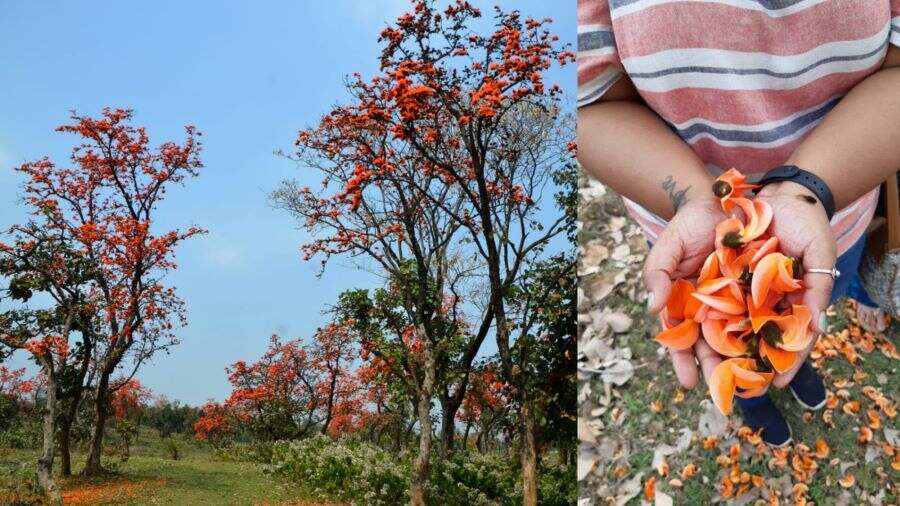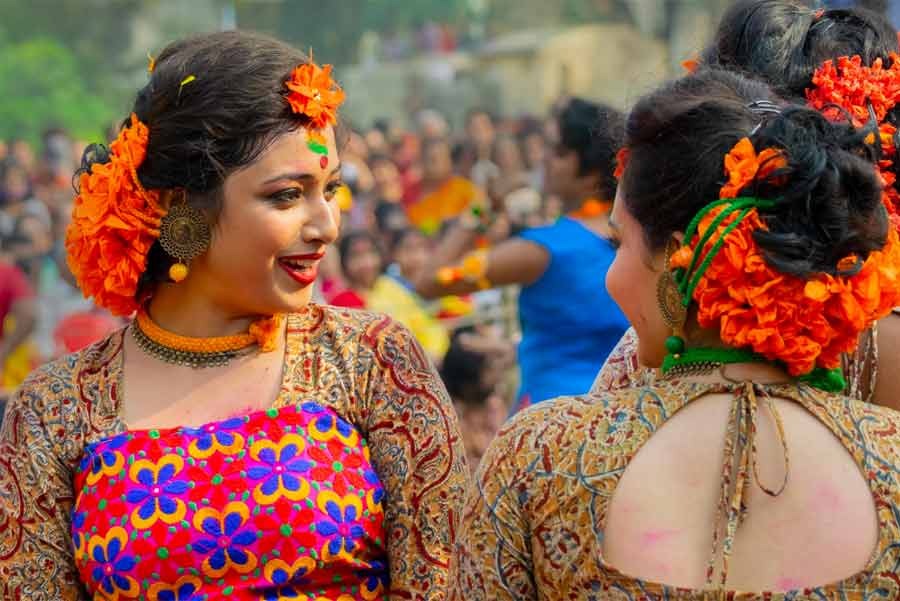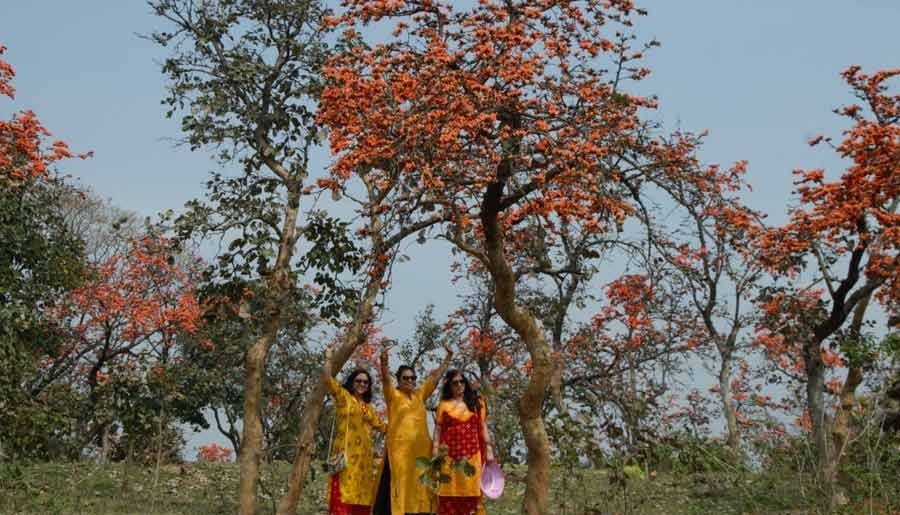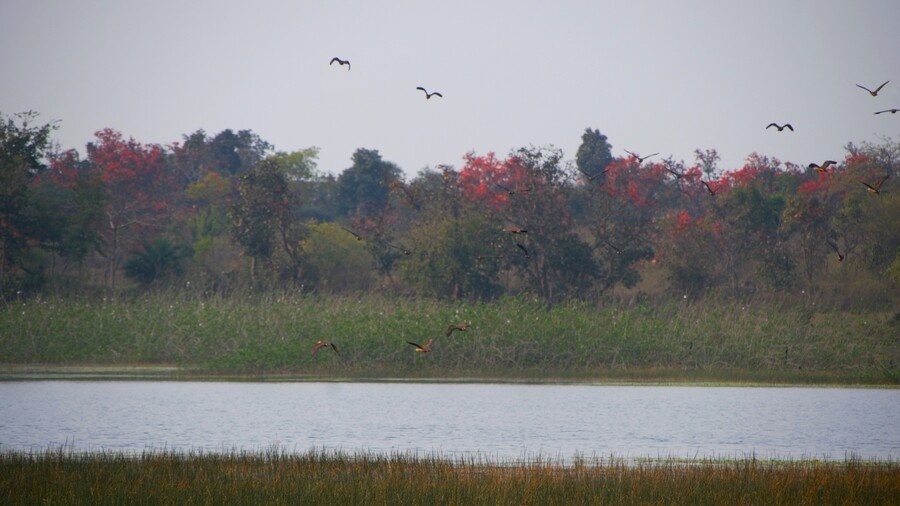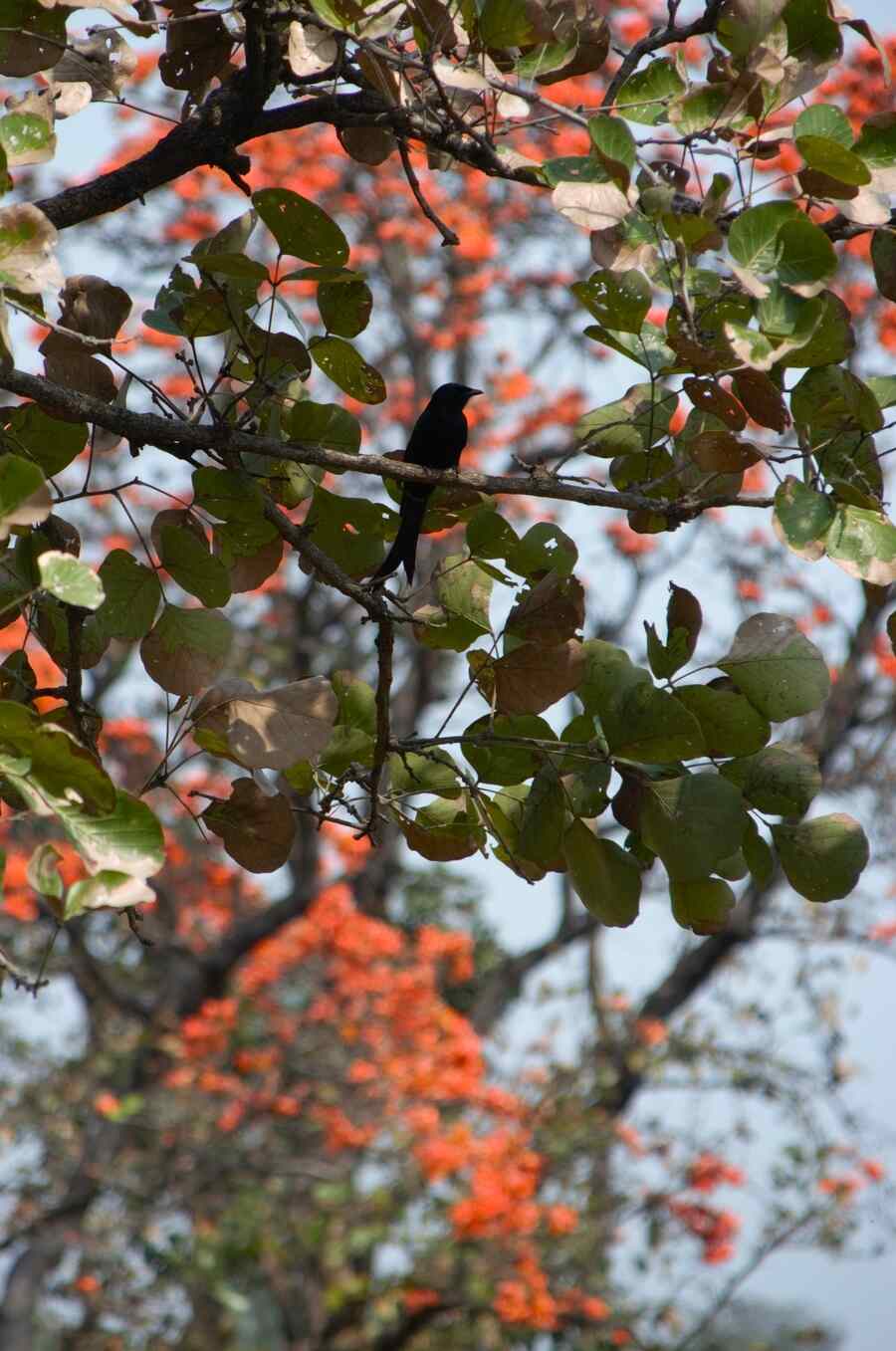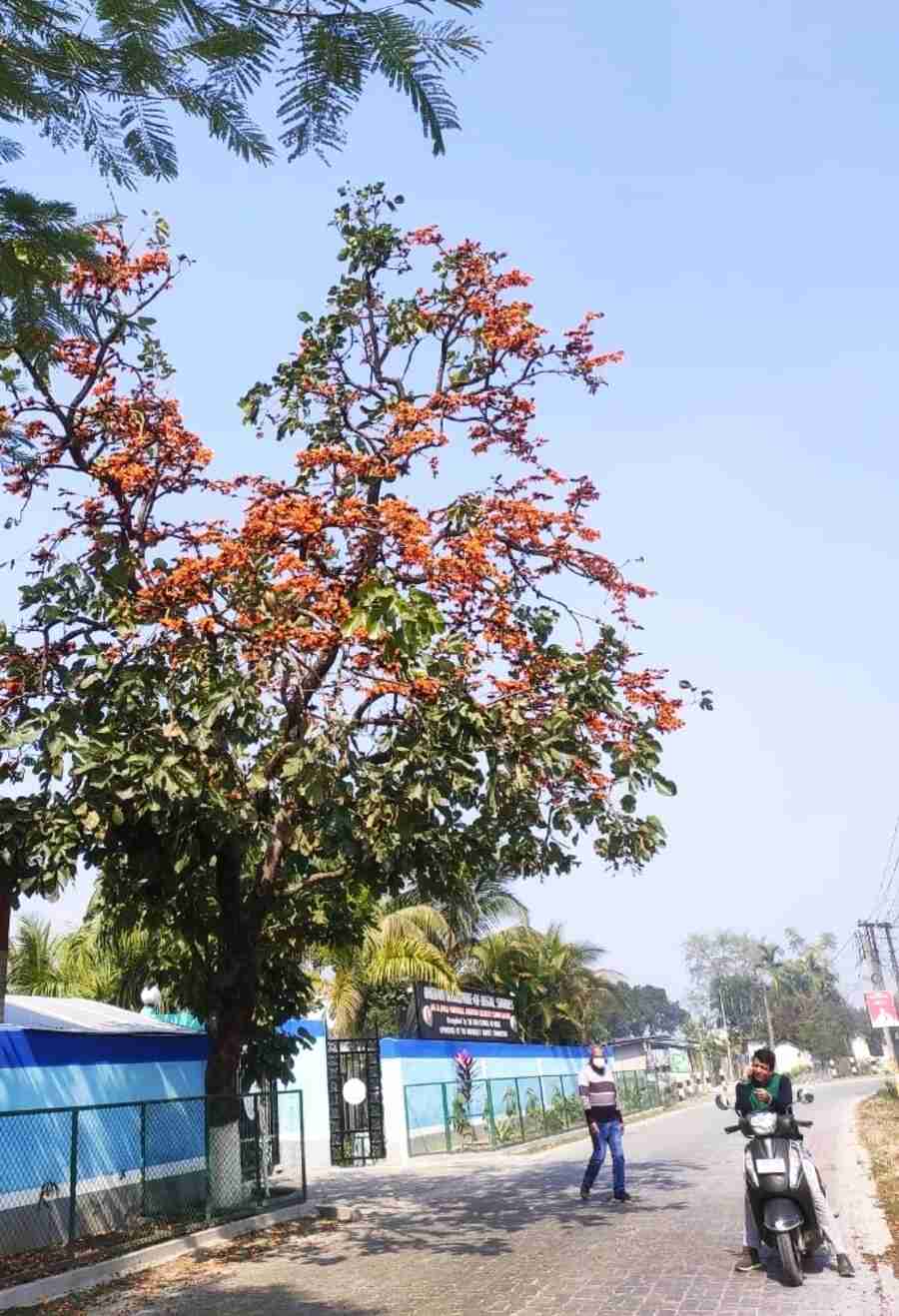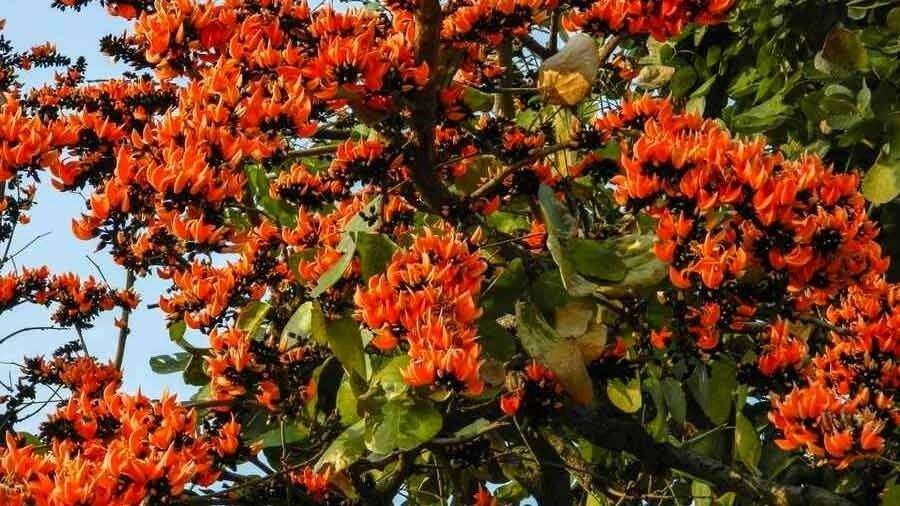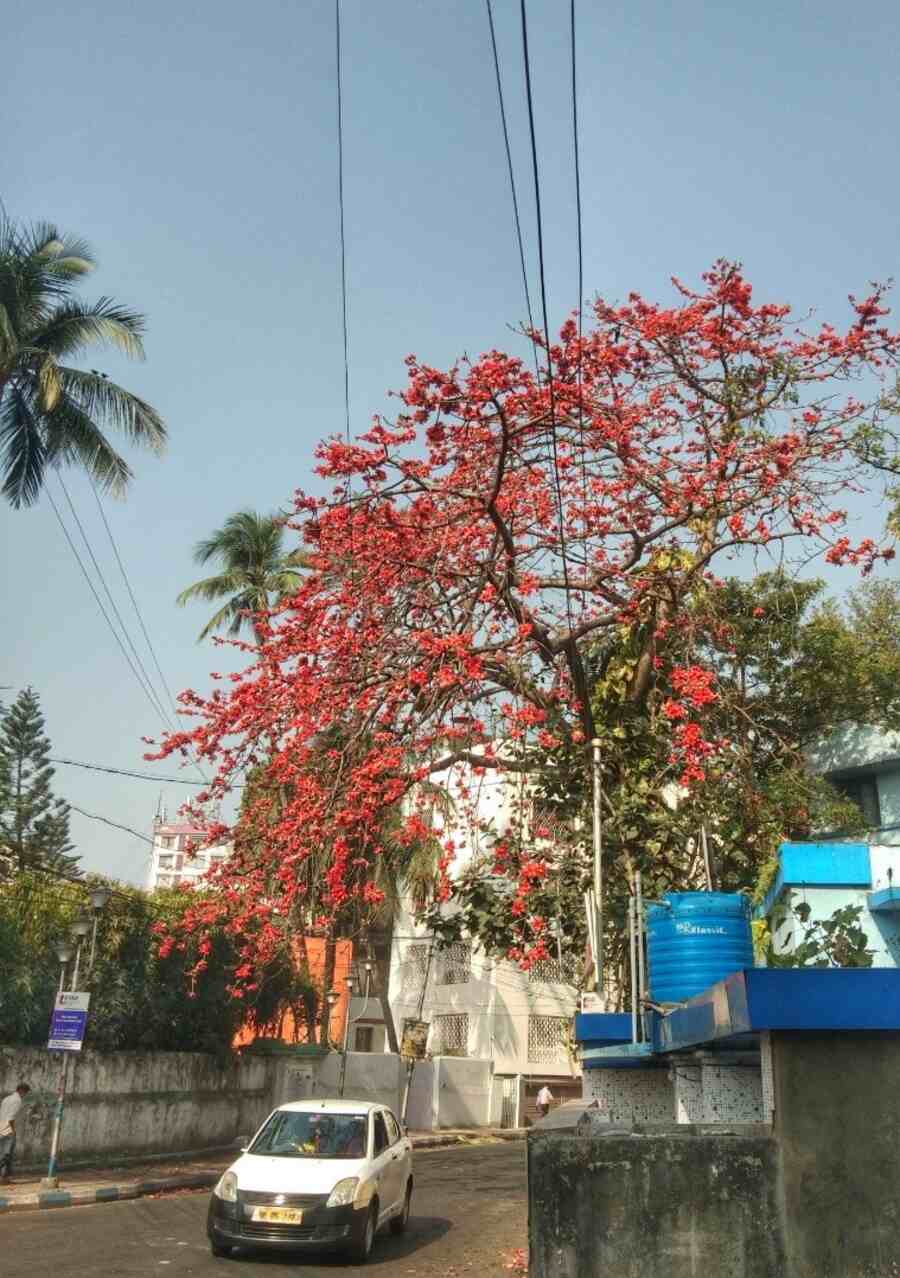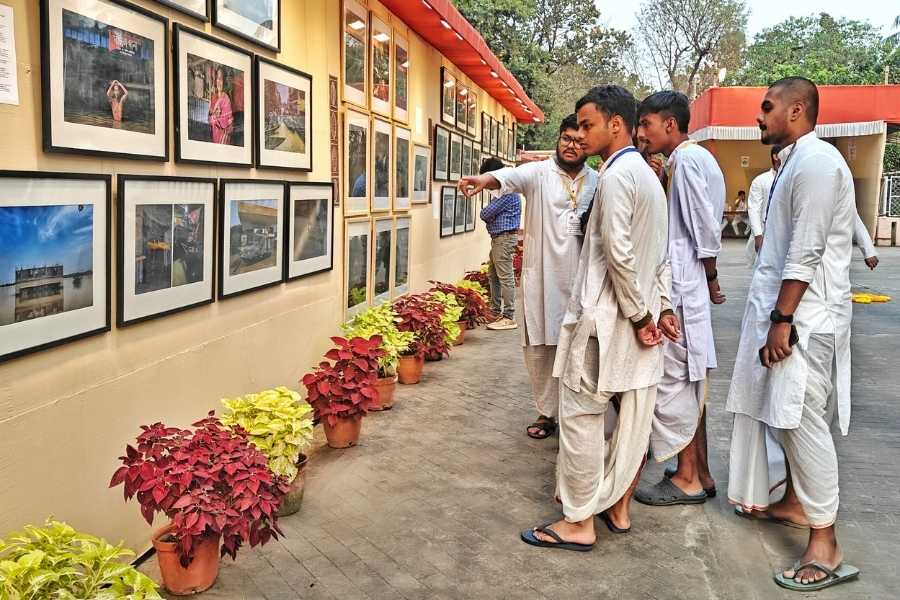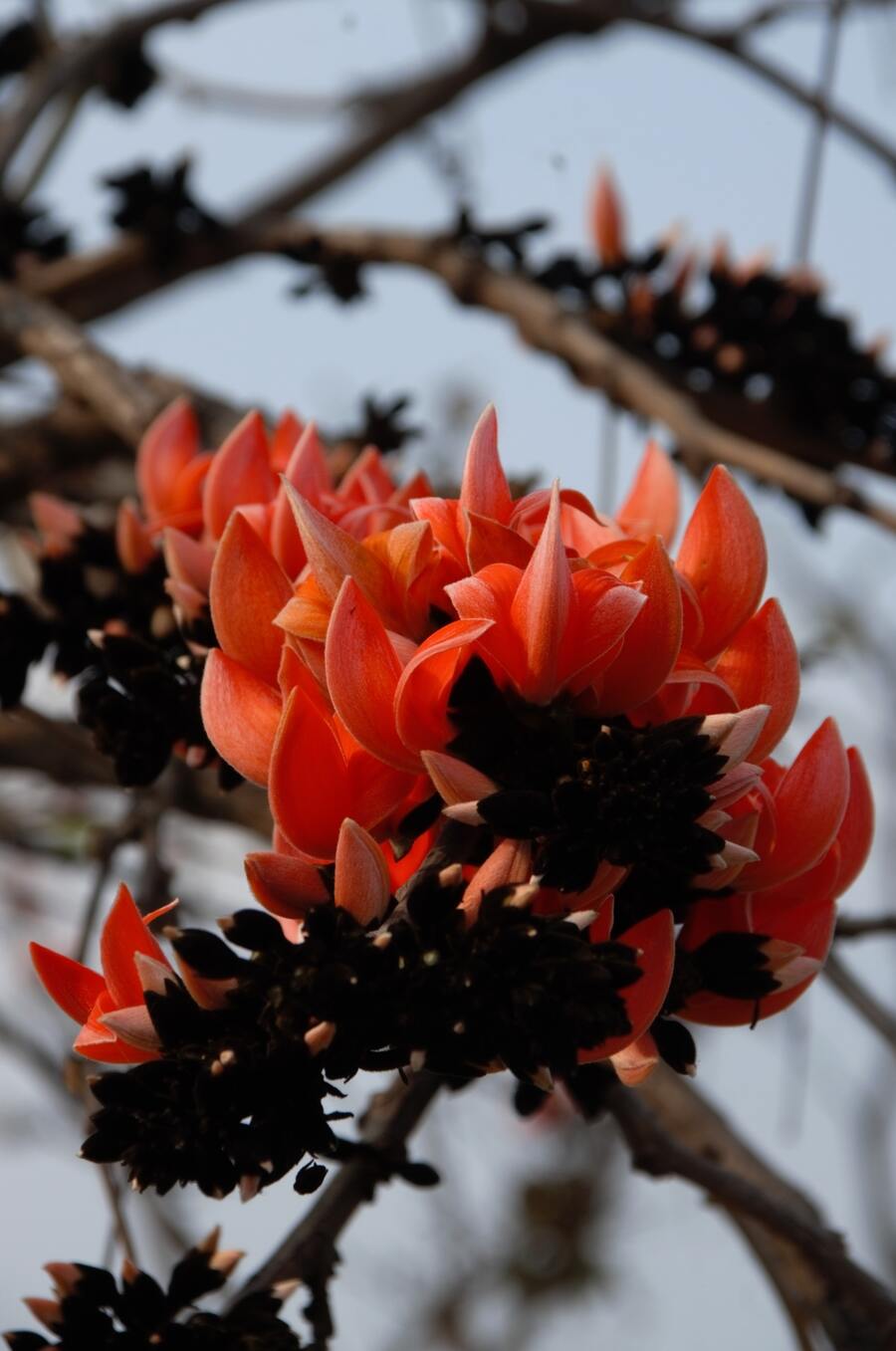
Scientifically known as butea monosperma, and commonly as ‘palash’ or ‘dhak’ and ‘parrot tree’ among other things, these trees that bloom in late February and March in Bengal and other parts of India are famously known as the ‘flame of the forest’ for their warm hues and unique shape
Rumela Basu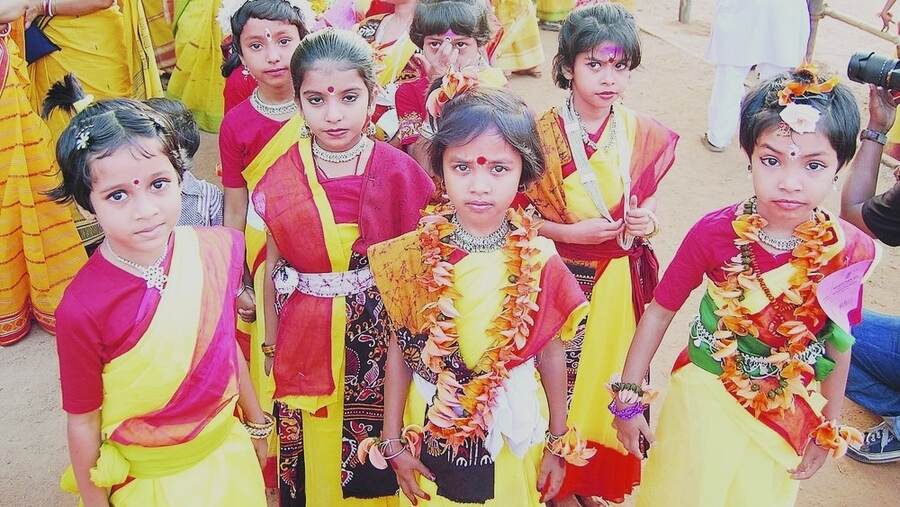
It might not be wrong to say that nowhere is the ‘palash’ celebrated the way it is in Santiniketan, where the flowers have become synonymous with the celebrations of spring and ‘Dol’ (Holi). In his poem, Ore grihobashi, Tagore wrote, ‘ranga hashi rashi rashi ashoke palashe’, immortalising the flower’s vibrant hues and connotations of celebration
TT Archives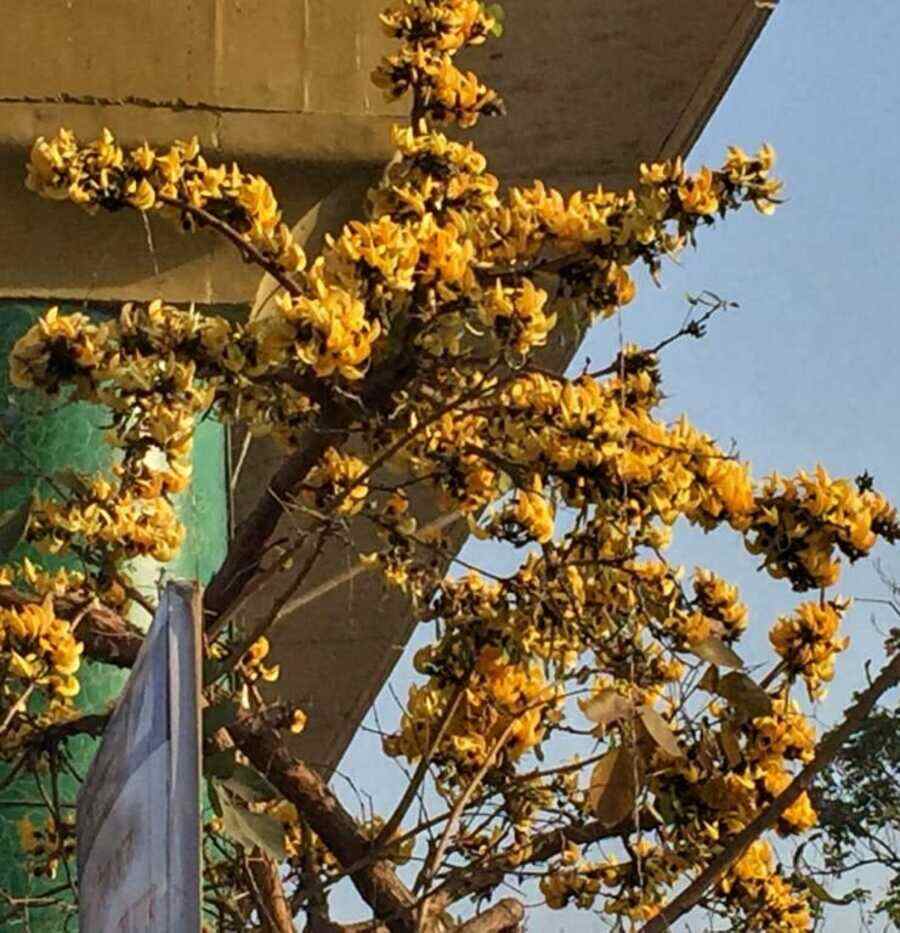
One of the most special sights is spotting the somewhat rare sunshine-coloured palash bloom. The yellow flowers are not as commonly seen as their orange-red counterparts. If you’re going to the Kolkata book fair this year, stop a moment near gate number five to get a glimpse of this yellow palash tree
Ashim Paul